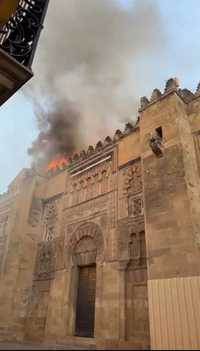Rosario Castellanos in the classroom: Memories of her hilarious humor and subtle irony

Rosario Castellanos in the classroom: Memories of her hilarious humor and subtle irony
Kyra Núñez
Special for La Jornada
La Jornada Newspaper, Saturday, August 9, 2025, p. 2
My name is Flora Botton, and I studied literature at UNAM. One of my teachers was Rosario Castellanos many, many years ago, in 1961. She taught comparative literature. She was a sensational teacher, direct and gracious to share with the class, and no, she didn't boast about her books or herself as a writer. She was, however, extremely friendly, even more so outside of class.
Flora, who has read since childhood, chose a university degree in literature and took the comparative literature class taught by Raúl Ortíz, an exceptional teacher. When he traveled abroad, Ortíz was replaced by Rosario Castellanos, who had been her close friend ever since. That's how Rosario and Flora met, in the classroom.
The Rosario Castellanos that Flora, then a student, met at UNAM had a very pleasant sense of humor
that she enjoyed outside of class when she told him anecdotes about her life. She especially remembers one about oranges: when her father, returning from the United States, brought the discovery to Comitán: oranges are squeezed and served as juice
. One might hear that with disbelief today, but in the 1960s it was different, Flora says.
She adds: another anecdote Rosario would tell, with that sense of irony about herself, was when she kept saying she couldn't drive a car. Of course, she knew how to drive and owned one, but one day, at two in the afternoon in the middle of the Insurgentes roundabout , she couldn't take it anymore. She got out of the car and left it right there
. Flora remembers her telling her she didn't give it any importance or worry about what happened next; she told it with such grace that she never drove again.
His death, infinite sadness
“I learned of Rosario's death at university; I don't remember who told me because it provoked a reaction of shock and disbelief. The news was horrifying and confirmed by Raúl Ortíz, my friend, enough of a friend that I invited him to dinner at home
and Rosario's closest friend, so much so that he served as her executor.
I was incredibly saddened; at first, I felt incredulous. How could anyone die in Israel? As if someone couldn't die there! And no, there's no point in discussing the details; we can't know.
“What I remember most about her is that she was a very warm woman, quite intelligent, with a great sense of humor; I loved being with her. I can't say we were the kind of friends who had lunch or dinner together; it was a cordial relationship, not an intimate one. Rosario always had a good sense of humor, and she was ironic or sarcastic, like when she spoke of him as a child in her Letters to Ricardo .”
Ricardo was not monogamous
"There's no reason to get angry or take Ricardo Guerra seriously; he was like that, the kind of person, man or woman, who doesn't know how to be monogamous, like Diego Rivera... I know this because I lived with someone who couldn't believe there were people who were bothered by that behavior.

▲ Chiapas writer, translator, diplomat, teacher, and poet Rosario Castellanos, photographed in 1972. Photo by Rogelio Cuéllar
“I began my university studies at the Faculty of Philosophy and Letters in 1961, in the Letters department, where the professor was Raúl Ortíz, who later traveled abroad. Rosario Castellanos took over as the class leader. “Of course I already knew her; I had read Balún Canan (1957) and then Oficio de Tinieblas (1962). Rosario was already renowned, but no, in her classes she didn't boast about her books or about herself as a famous author.
“Our friendship began in class and continued outside of class; it's not like we used to go to the cafe or eat together, since I was a young girl and she was the teacher, but we got along well, until she went to Israel as an ambassador and always distinguished me with her cordiality.
“She had a wonderful sense of humor that stands out in her Letters to Ricardo, which are on the one hand laugh-out-loud funny, but also heartbreaking, which is normal, because she was a complete woman, like any woman worth her salt, because we humans are complex, contradictory, ambivalent… it is, therefore, another way of being human and free,” Flora adds.
Rosario, her friend
From the beginning of classes, we liked each other and became friends. Of course, she was already a grown woman and I was just a student, but we were, yes, very close friends. To finish my degree, she advised me to write my thesis on Jean-Paul Sartre and that Ricardo Guerra should be my thesis advisor, but I refused because Sartre interested me as a writer, not as a philosopher. We were friends until she left for Israel, that is, from 1961 to 1971, when she traveled to Tel Aviv as the Mexican ambassador
.
Ricardo wasn't Flora's teacher, but he met her through Rosario. When Flora was a teacher at the Faculty of Humanities, Ricardo asked her to be the examiner for the professional examination of his third (of four) wife, Margarita. Of course, I said no; I flatly refused
.
"But Ricardo was a Rosario synod teacher for his professional exam, as evidenced by a photo from that time. In classes at that time, there was a formal relationship between teachers and students, unlike today, when a student is able to ask the teacher 'what is your theoretical framework' to decide whether he wants to continue with her.
“It wasn't a coincidence that Rosario was always surrounded by men, given the climate of that time, because very few women were listened to… until now, there hasn't been a female rector at UNAM, but we do have a female president. Machismo prevents them from being elected… women are still often the ones who serve coffee to their peers, and at gatherings, it's female friends who help the hostess, not male friends.”
Talking more about Rosario makes Flora feel illegitimate. What I tell is what I remember. I don't want to usurp a role that doesn't belong to me,
says Flora Botton, who truly has the privilege of having been a student of Rosario Castellanos, a good teacher and friend.
He is missed.
The Ministry of Culture speaks out against Adidas for copying Zapotec footwear.
The sale of the Oaxaca Slip On sandals violates their collective rights and current legislation, he emphasizes.
Alonso Urrutia, Arturo Sánchez and Jorge A. Pérez
Reporters and correspondents
La Jornada Newspaper, Saturday, August 9, 2025, p. 3
A formal complaint was filed against the international consortium Adidas for the distribution of footwear that reproduces the traditional design created by the Zapotec indigenous community of Villa Hidalgo Yalalag, in the Sierra Norte of Oaxaca.
This action was supported by the federal Ministry of Culture (SC), which spoke out against the misappropriation of this collective cultural heritage.
Undersecretary of Cultural Development Marina Núñez Bespalova reported that company representatives have begun discussions to establish a dialogue that will allow for an agreement to be reached and repair the damage caused to the indigenous community
.
Yesterday, during her morning press conference, President Claudia Sheinbaum emphasized that this case involves collective intellectual property rights that must be respected in accordance with the Federal Law for the Protection of the Cultural Heritage of Indigenous and Afro-Mexican Peoples and Communities.
There must be compensation
, he said, adding that if negotiations fail, legal avenues will be explored to ensure justice.
Five years ago, the SC launched the Original movement, which emerged in response to previous plagiarisms that could be considered crimes.
This initiative has raised awareness among artisans about the protection of their cultural expressions and established guidelines to foster prior dialogue between communities and companies before any commercial collaboration. It also guarantees protection through the National Copyright Institute and provides legal support
, added Núñez Bespalova.
In Oaxaca, Adidas' legal representatives formally requested a meeting with the state government to address allegations of alleged appropriation of the original designs of the Villa Hidalgo Yalalag huaraches, which allegedly inspired the Oaxaca Slip On sandals by Chicano designer Willy Chavarría.
Governor Salomón Jara Cruz released a letter signed by Karen Vianey González Vargas, legal and compliance director of Adidas México, proposing a virtual meeting to discuss the issue directly and move toward reparations with the Zapotec community.
The official document, issued by Jorge Dionne, director of Adidas Mexico, recognizes the importance of the statement made by the authorities and expresses the willingness to initiate a respectful and constructive process
to address the concerns of the indigenous community.
Furthermore, it emphasizes that the decisions made will be guided by respect, reciprocity, and recognition of the peoples who created our cultural heritage.
Governor Jara Cruz confirmed that the company has already responded and that a meeting will soon be held between Adidas representatives, state authorities, and members of Villa Hidalgo Yalalag to address their demands and move forward with repairing the damage
.
At the same time, the Oaxaca Ministry of Culture and Arts requested the immediate suspension of the sale of Oaxaca Slip On sandals, arguing that their sale violates the collective rights of the community and contravenes current legislation.
Fire under control at the Mosque-Cathedral of Córdoba, Spain
From the Editorial Staff
La Jornada Newspaper, Saturday, August 9, 2025, p. 3
The fire that broke out last night at the historic Mosque-Cathedral of Córdoba, in southern Spain, was brought under control and extinguished by firefighters, authorities reported.
The mayor of Córdoba, José María Bellido, assured that the mosque is safe
, that the flames will not spread, and that the damage caused will not be a catastrophe
.
Shortly after 9 p.m. local time, the fire started in a side chapel next to the Holy Spirit Chapel, where a cleaning machine and several chairs were located. According to local sources, the flames may have originated in that equipment.
The thick smoke, visible from several points in the historic center, alarmed residents and visitors. Three firefighter crews responded to the scene and activated the monument's self-protection plan. Authorities confirmed they brought the blaze under control nearly two hours after it began.

▲ The fire broke out last night. Authorities report that the facility is safe
. Photo taken from X
The Mosque-Cathedral, a UNESCO World Heritage Site, welcomed more than two million visitors in 2024. Renowned for its forest of columns and two-tone arches, construction began in the 8th century on the remains of a Christian basilica during the Emirate of Abd al-Rahman I and was expanded over four centuries.
Following the Christian conquest in 1236, it was consecrated as a cathedral, and Gothic, Renaissance, and Baroque elements were added, although much of its original Islamic structure was retained, making it a unique symbol of cultural overlap in Spain.
With information from AFP and Europa Press
jornada


%3Aformat(jpg)%3Aquality(99)%3Awatermark(f.elconfidencial.com%2Ffile%2Fbae%2Feea%2Ffde%2Fbaeeeafde1b3229287b0c008f7602058.png%2C0%2C275%2C1)%2Ff.elconfidencial.com%2Foriginal%2Fe61%2F47b%2F978%2Fe6147b978205dd747fa1e594cca5082b.jpg&w=3840&q=100)
%3Aformat(jpg)%3Aquality(99)%3Awatermark(f.elconfidencial.com%2Ffile%2Fbae%2Feea%2Ffde%2Fbaeeeafde1b3229287b0c008f7602058.png%2C0%2C275%2C1)%2Ff.elconfidencial.com%2Foriginal%2F6a2%2Fbfe%2Fa81%2F6a2bfea81234041b6051bf7c4d087517.jpg&w=3840&q=100)

